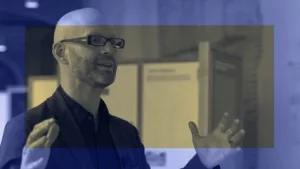The omnipotence of the internet and social media in our daily lives, as well as in public affairs, becomes increasingly indisputable day by day. During the past two to three years, social media had the chance to become the main vessel of a multitude of protests and social movements, with varied rates of success. From the pandemic to the death of George Flodyd and the mobilisation of Black Lives Matter,from Turkey’s Gezi Park protests to the #MeToo movement in a multitude of countries, it seems fairly easy to mobilise a social movement by utilising the speed of social media. However, easier and faster mobilisation does not necessarily equate to long-lasting change. In the words of Zeynep Tufekci, “In embracing these technologies, are we overlooking some of the benefits of slow and sustained change?”
The “art” of digital activism
Undoubtedly, today’s digital means have been proven useful as a technique for fostering coordination and mobilisation of activists, as well as a statement of collective unrest and protest. Compared to traditional means of information sharing and organisation, the odds of collecting more signatures on a petition or bringing more people to a protest through social media platforms are higher. They are accessible, convenient, and interactive on a multitude of levels, making information sharing a matter of seconds. Additionally, cyberactivism bridges the communication gaps between members of the same movement who might live in hostile environments without requiring them to meet in person, allowing for individual and group work to be done remotely. Digital activism is the most democratic form of activism, as social media bypasses the big companies that were needed in the past in order to get information across to the masses and undertake big campaigns. Nowadays, anybody with a phone and an internet connection can broadcast a message, an event, or a cause.
We have, after all, witnessed the events that took place in the summer of 2020, also known as “the summer of digital protests.” A pandemic, George Floyd’s death, and an imminent presidential race were just a few of the events that galvanised Americans and the rest of the globe that year. That summer saw a surge in activism during a time when physical contact was out of the question, therefore turning people towards social media and online organisation.
Despite all that, though, online-led protests and movements seem to be easily repressible or short-lived compared to their in-person counterparts. Click-ready petitions are the ideal format for amassing tens of thousands of signatures rapidly, but they are not likely to be any more effective than physical protesting. Nowadays, everything is in part organised by the use of these new technologies, from donations to rallies. However, their accomplishments and their consequences are nowhere near comparable to the magnitude and intensity they generated online. Think about the protests mentioned before; they were all online booms, but have you heard of them recently? Cause personally I have not despite the fact that the issues they targeted prevail.
Not everything can be solved by the Internet
One would be quick to shine the spotlight on a side-effect of the exponential growth of online activism, which is “clicktivism” and “slacktivism.” Clicktivism refers to the use of social media and other online means to advocate for a certain cause just by clicking a button on an endorsement; slacktivism, on the other hand, refers to a half-hearted kind of activism that involves posting links, comments, and photographs in favour of a cause on social media but without engaging in any further action. Those two phenomena are partially to blame for the rapid downfall of many initially successful online social movements. Many fall into the rabbit hole of sharing links and other media online without actively participating outside of the internet, which prevents the information from reaching those who are not yet aware of the issue, the bodies responsible for it, or those who can bring about significant change.
The critical issue with the way today’s social movements is that they are not structured to last; they build up rapidly without any organisational foundation. What most people aim to achieve by sharing a picture or a hashtag related to the cause they want to promote is to get it “trending,” so it reaches more people more quickly. And the problem lies exactly there: a trend is a short-lived development or change in a situation or in the way that people are behaving. A trend is an ephemeral expression of simultaneous worldwide interest that is ready to give its place to the next viral thing without leaving a lasting trace on the user’s mind.
It is important to understand that in order for a social movement to achieve significant results, it needs to significantly alter the fabric of the problem itself. The slow yet systematic process that made all those historical social changes and popular movements possible included creating an environment where difficult decisions could be taken. By carefully organising the path of change, there was space for consensus on one step before the next was going to be taken. Before any speck of long-term progress, there is long-term work behind it, something that is severely omitted when most of the parts of modern-day movements take place online. This does not imply that we need to copy the successful social movements of the past and use them as the blueprint. It is not their structure we need but their motivations and their work ethic to establish environments with strong foundations for deliberation and effective decision-making.
#Change_needed
The key, therefore, to securing an impactful future for online activism is to not rely on the internet to do the work for us, but rather for it to be a tool, a vessel for the cause we are fighting for, to reach a broader audience and be noticed by bodies of authority and government. Petitions, links, and endorsements are very important and can certainly help a social movement reach new heights of engagement worldwide. But it will not replace the hard and structured process that it takes to alter the world we live in. As elementary as it may sound, a concrete organisation with so much action as well as motivation and participation is what is going to bring future social movements from their online birthplace to become a materialised sign of change.
Online activism exemplifies the internet’s transformative power in society. Modern digital technology has fabricated levels of access and speeds of sharing that were previously unimaginable. If we manage to combine those assets strategically with well-thought-out, solid foundations of action, we will be one or even more steps closer to changing the world and moulding it into what we dream it could be. Maybe Twitter, Instagram, and all the other platforms are great for sharing information and raising awareness on an issue in a matter of seconds, but we also need to create a framework for decisions to be taken, for collective thinking and cooperation with authorities and bodies that can materialise those causes and make the better future a better present.
To modernise democracy, we will need to innovate at all levels, from the organisational to the social to the political. So take these bold steps that go beyond the online world, protest, and take matters into your own hands. Because no online platform can ever replace the impact of organised, collective, and determined will for change.
Featured Cover Image: Pexels






